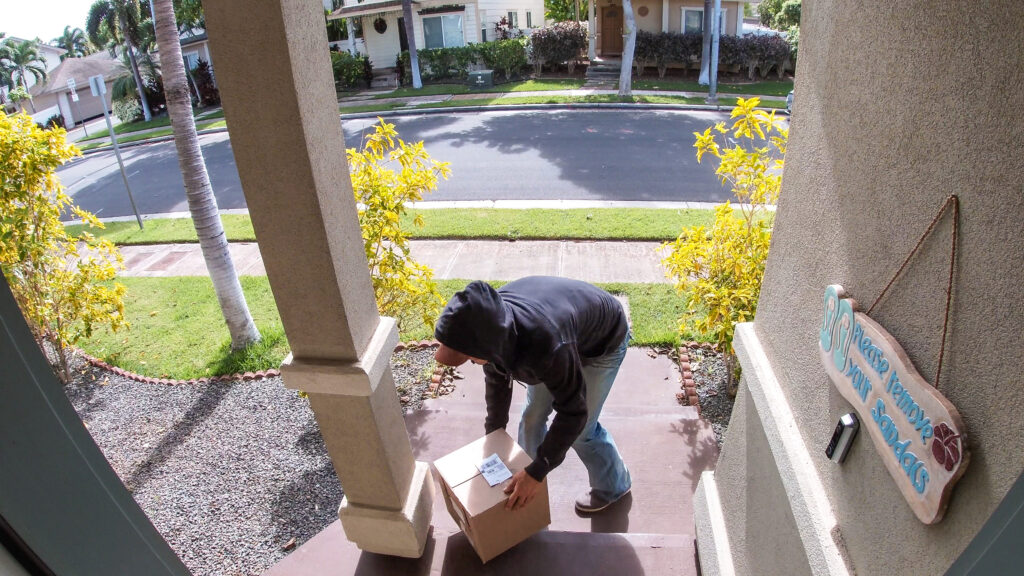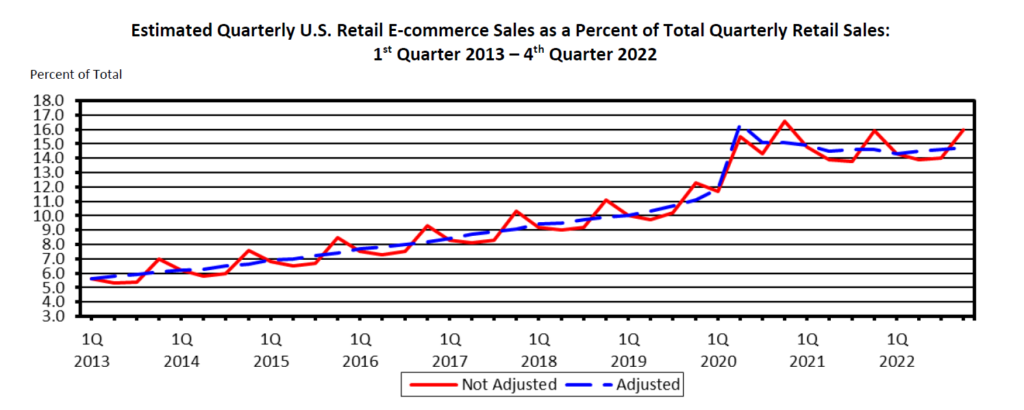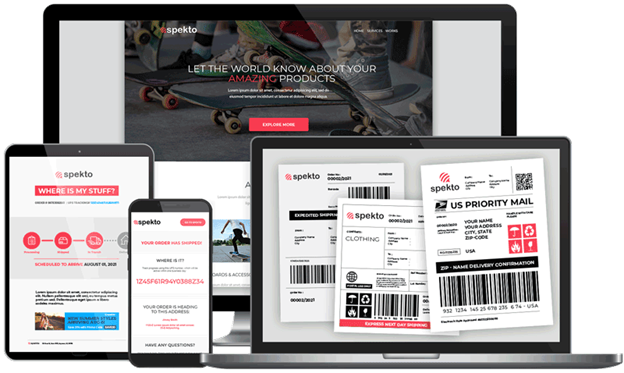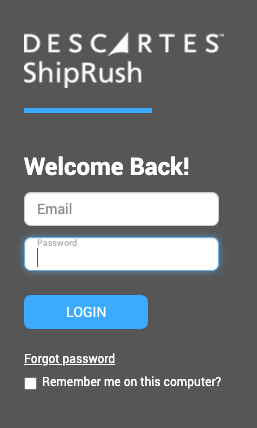Porch piracy is a growing threat to ecommerce businesses and their customers. How does this impact your business, and what can you do about it? Let’s talk about the porch piracy problem.

The Porch Piracy Problem
What is porch piracy?
Porch piracy is commonly defined as the theft of a package left outside someone’s door by a courier. Your customer orders something online but never receives it because someone swipes the parcel from their doorstep.
How does package theft hurt ecommerce businesses?
Every time your customer loses an order to package theft, it damages their trust in online shopping. That is a big problem because repeat business is one of the most important profit drivers for ecommerce merchants.
To help ecommerce retailers understand customer concerns, Descartes conducted an ecommerce consumer sentiment survey around home delivery. This year’s results showed that consumers’ #1 concern was security, and 81% of respondents ranked security for home delivery as extremely important (The Descartes Systems Group, Inc., 2023).
How widespread is the porch piracy problem?
Around 260 million packages were stolen in the United States last year, which is 50 million more packages compared to the previous year’s results, according to survey results published by Safewise. Other survey highlights include:
- Estimated 19.5 billion dollars lost.
- 79% of Americans surveyed were victimized by porch pirates.
- Over half of the victimized consumers experienced multiple instances of package theft.
On a global scale, according to a report by Penn Elcom, “Over 12 months, nearly one in every ten people worldwide reported having at least one box lost or stolen, totaling 1.009 billion shipments globally” (Penn Elcom, 2022). In addition,
- 33% said they had experienced parcel theft or loss in their lifetime.
- 20% of respondents expressed anxiety about parcel theft.
- 11% said they were reluctant to make new online orders because of parcel theft.
Why is the porch piracy problem growing?

Growth in Ecommerce
During the COVID-19 pandemic, more people than ever began shopping online, and ecommerce sales in the United States rose from $571.2 billion in 2019 to $815.4 billion in 2020 (Brewster, 2022). Though the worst of the pandemic has ended, ecommerce sales continue to grow, with an estimated $1,034.1 billion in online sales in 2022 (U.S. Department of Commerce, 2023).
Fewer People at Home
Now that most people have returned to pre-pandemic activity levels outside the home, packages often sit outside the door for extended periods and become targets for porch piracy. Package theft occurs even when consumers have security measures in place. For instance, 35% of Americans who experienced porch piracy had a video doorbell or security camera set up, and 17% said they caught the thief on camera (Edwards, 2022).
Low-Risk, High Opportunity
Most often, porch piracy is a crime of opportunity with minimal consequences. Unless the courier is USPS, stealing a package is not a felony in the U.S. Instead, it is a crime such as mail theft, trespassing, petty theft, or grand theft. These fall under state laws and often do not carry heavy penalties (Edwards, 2022). This makes a potentially lucrative theft even more appealing because it is low risk if you get caught.
What kinds of protection do ecommerce shoppers need from retailers?

To help ecommerce retailers understand what their customers need, Descartes conducted an ecommerce consumer sentiment survey around home delivery. This year’s results showed that consumers’ #1 concern was security, and 81% of respondents ranked security for home delivery as extremely important.
Three Ways Ecommerce Businesses Can Protect Consumers from Porch Piracy
1. Provide accurate delivery tracking.
Considering the porch piracy problem, it makes sense that consumers would prioritize protecting their purchases. Besides security, 74% of consumers also ranked delivery tracking as extremely important (The Descartes Systems Group, Inc., 2023). Knowing precisely when a package will arrive allows consumers to plan for someone to receive the delivery, preventing package theft.

Instead of using generic carrier tracking pages and shipping notifications, keep your brand in front of your customer with communications for their order. The more they see your brand, the more their trust in your business will grow, especially when you provide an excellent fulfillment experience.
- Provide branded tracking pages. Provide package shipping information framed within your brand to underscore that your business provides the best experience.
- Send branded email notifications. Stay in front of your customers to build trust as you manage their expectations about shipping. Excellent communication is vital.
2. Provide shipping protection.
Some thefts may still occur despite everyone’s best efforts, so have a plan to help your customers achieve a smooth and painless claims process. Carrier insurance claims may be complicated to file, and the claims resolution process may take some time before outcomes are determined.
Use a shipping insurance provider to prevent these frustrating issues and retain your customers. We recommend ShipRush Total Shipping Protection for delivery security and painless claims.
Make your customers aware of extra security measures your company is using to protect their purchases. Include a “secure delivery” badge or icon on your website with details about how your company’s security measures are giving them the best shopping and delivery experience.
3. Work with highly rated carriers/couriers.
Consistently ship items with carriers with an excellent reputation for secure, on-time delivery. When packages arrive at the correct time and place, consumers have the best chance of receiving them before porch pirates can strike.
To find highly rated carriers/couriers, read customer reviews and compare ratings on sites such as Trust Pilot. Even if the carrier is slightly more expensive, providing your customers with secure shipping will pay off in customer retention.
4. Take advantage of carrier-specific services.
Many carriers offer security-related services. Make sure you understand them and make these options available to your customers. “Signature required for delivery” and notifications from the courier for exceptions and proof-of-delivery are two examples of services you can extend to your customers to improve security.
Using special services is very easy via automation within the shipping solution. Instead of manually selecting different services for each order, set automation rules based on order requirements. Any time you receive an order that meets the set criteria, the shipping program will automatically apply the special services to the order.
Special services are provided by leading carriers such as FedEx, UPS, USPS, and others.

As ecommerce grows, so does package theft. As long as porch pirates have ample opportunities to steal, consumers and ecommerce businesses will pay the price. The key to preventing losses from package theft is clear expectations about when and where a package will arrive and delivery as promised.
Take measures to improve home delivery security for your customers, and you will reap the benefits of happy customers, repeat business, and fewer headaches.
References
Brewster, M. (2022, October 3). Annual retail trade survey shows the impact of online shopping on retail sales during the COVID-19 pandemic. Census.gov. Retrieved April 11, 2023, from https://www.census.gov/library/stories/2022/04/ecommerce-sales-surged-during-pandemic.html#:~:text=More%20than%2020%20years%20later,to%20%24815.4%20billion%20in%202020.
The Descartes Systems Group, Inc. (2023, March). Dear Consumer: How Do You Feel About Home Delivery Now? Waterloo.
Edwards, R. (2022, December 19). Worst Metro Cities for package theft for 2022. SafeWise. Retrieved April 11, 2023, from https://www.safewise.com/blog/metro-areas-porch-theft/
Penn Elcom. (2022). Penn Elcom Global Parcel Theft Report 2022. Washington; Penn Elcom Limited.
U.S. Department of Commerce. (2023, February 17). Quarterly Retail E-Commerce Sales -4th Quarter 2022. Washington, D.C.; U.S. Department of Commerce.









